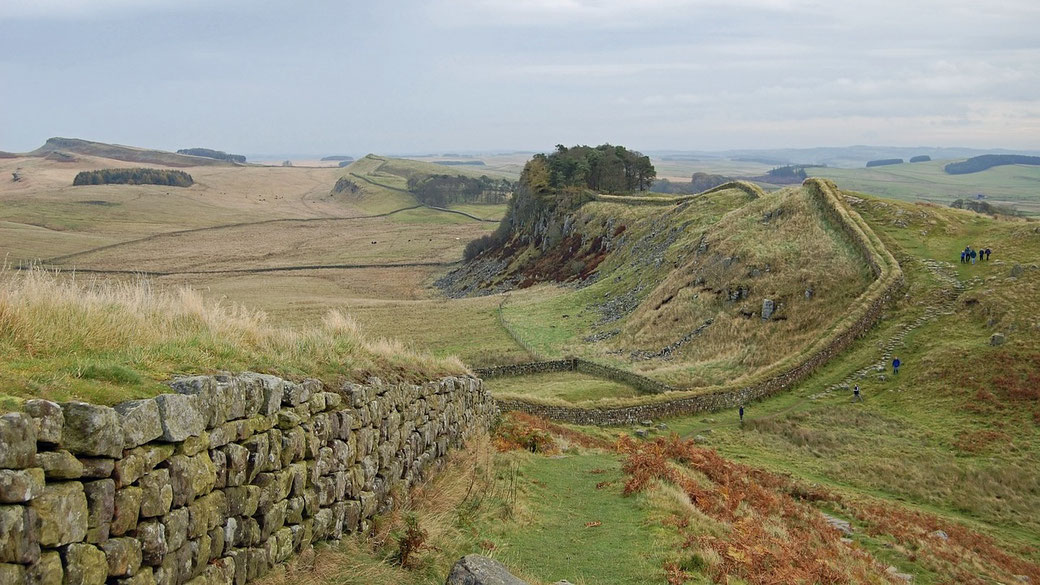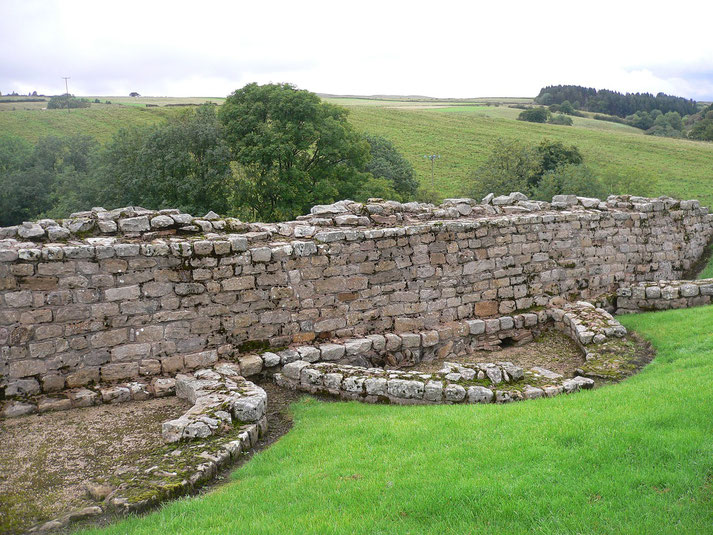Hadrian's Wall: the mysterious ruins that hold secrets of Roman Britain

Hadrian's Wall is one of the most impressive and iconic ancient structures in the world. Spanning over 73 miles across the rugged terrain of northern England, this remarkable feat of engineering has stood the test of time for almost 2,000 years.
Built at the height of the Roman Empire, the wall was designed to mark the northernmost boundary of Roman Britain, providing a line of defense against the fierce and warlike tribes of Scotland.
But Hadrian's Wall is more than just a fortress; it's a testament to the ingenuity and skill of the Roman engineers who built it, and a window into the rich and complex history of this remarkable period in human civilization.
Brief history of the wall
The construction of Hadrian's Wall began in 122 CE and was completed in around six years.
The wall was built to mark the northern limit of the Roman Empire and to protect the Roman province of Britannia from the attacks of the Picts, a confederation of Celtic-speaking tribes who lived in what is now Scotland.
The wall was constructed using stone, turf, and timber, and was up to 20 feet high in some places.
It was dotted with forts, milecastles, and turrets, which housed the soldiers who were stationed there.
Who built it?
The building of the wall was a massive undertaking that involved the labor of thousands of soldiers and civilians.
The construction process was highly organized, with teams of workers building different sections of the wall simultaneously.
The soldiers who were stationed at the wall were responsible for its maintenance and defense. The wall was garrisoned by a mix of soldiers from across the Roman Empire, including Britons, Gauls, and Spaniards.
Fatal flaws
Hadrian's Wall was not an impenetrable barrier, but rather a physical and psychological deterrent to would-be invaders.
The wall was manned by soldiers who were well-trained in the art of warfare and were equipped with weapons and armor that were superior to those of the Picts.
The wall also served as a symbol of Roman power and control, demonstrating the might of the Empire to the people who lived beyond its borders.
Despite its impressive size and scope, Hadrian's Wall was not an effective defense against all of the threats that the Roman Empire faced.
In the 3rd century CE, the wall was breached by the Picts, who attacked and looted several Roman forts along the wall.
The Romans eventually retook control of the wall, but it was never the same again. By the 5th century CE, the Roman Empire had begun to decline, and the wall was abandoned.

Important archaeological discoveries
Vindolanda Tablets
These are a collection of over 1,000 wooden writing tablets that were discovered at the Vindolanda fort. The tablets contain a wide range of information, including personal letters, shopping lists, and military reports. They offer a unique glimpse into daily life in Roman Britain.
The Carvoran Helmet
This is a Roman cavalry helmet that was discovered at the Carvoran fort. The helmet is made of iron and features an intricate design that includes a face mask, cheek pieces, and a plume holder. It is one of the best-preserved Roman helmets ever found in Britain.
The Staffordshire Moorlands Pan
This is a bronze vessel that was discovered at the Chesterton fort. The vessel features a scene from Greek mythology, depicting the moment when Perseus slays the Gorgon Medusa. It is one of the most elaborate Roman metalwork objects ever found in Britain.
The Corbridge Hoard
This is a collection of Roman artifacts that was discovered at the Corbridge Roman town. The hoard includes jewelry, coins, and military equipment, and provides a glimpse into the wealth and opulence of Roman Britain.
Hadrian's Wall today
Today, Hadrian's Wall is a popular tourist destination and an important archaeological site. The wall and its associated structures have provided a wealth of information about life in Roman Britain and the history of the Roman Empire.
Visitors to the wall can explore the many forts, turrets, and milecastles that once housed the soldiers who guarded the wall.
They can also see the remains of Roman towns and settlements that were built along the wall, as well as the impressive engineering feats that were required to construct it.
What do you need help with?
Download ready-to-use digital learning resources
Copyright © History Skills 2014-2025.
Contact via email
With the exception of links to external sites, some historical sources and extracts from specific publications, all content on this website is copyrighted by History Skills. This content may not be copied, republished or redistributed without written permission from the website creator. Please use the Contact page to obtain relevant permission.





